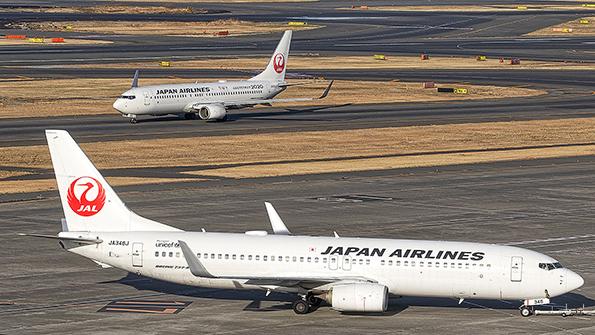
One irony of the coronavirus era of commercial aviation will be that there is so much financing available to support a new Boeing airliner—just probably not within the company.
But what if Boeing could partner with another entity to make it happen, such as private equity investors, one or more of its so-called super Tier 1 suppliers or even a corporate consortium in another country?
Boeing has posted record annual losses for the past two years as it suffers through the 737 MAX crisis and the COVID-19 pandemic. On the plus side, Boeing recently surprised Wall Street with a second-quarter cash loss that was much smaller than expected, and Chief Executive Dave Calhoun says the company is “turning the corner, and the recovery is gaining momentum.”
The airframer did end June with net debt around $42 billion, an unprecedented mountain of IOUs facing the 105-year-old company, and roughly eightfold more than at the end of 2018. That comes as Boeing’s Commercial Market Forecast foresees an 11% drop in demand for airliners over the next decade, and while industry observers debate whether the company can maintain a 40-50% market share against rival Airbus or if its market share will drop to 30-40%. Traditionally, the market share has been split roughly evenly.
Many observers and suppliers have hoped for a new Boeing airliner—a midmarket aircraft, a 737 replacement or whatever—to entice operators and help Boeing regain parity with Airbus. But some of those observers suspect a clean-sheet design will cost around $20 billion just to get to production and possibly a lot more, if 737 and 787 setbacks are any indication.
That spending would compete with two primary priorities for Boeing leaders: paying down debt and rewarding shareholders. Bank of America analyst Ron Epstein reports that 56% of Wall Street observers expect Boeing to launch a new aircraft eventually. But interestingly, only 34% say that doing so would improve Boeing’s profile with investors.
“Funding this new aircraft will be a challenge,” Avascent consultants say. “Based on Avascent’s analysis, Boeing likely lacks the cash flow to simultaneously underwrite a clean-sheet design this decade and continue to support investor returns via dividends and share repurchases at the levels that shareholders are accustomed to.”
Industry chatter ranges from the Pollyannaish—the U.S. government will back a new Boeing airliner now that trade tensions with Europe and Airbus have decreased in the World Trade Organization disputes over large commercial aircraft subsidies—to the seemingly implausible, such as private equity interest or even an outside billionaire suddenly wanting to help out.
Along the lines of the feasible is the idea of Boeing partnering with suppliers in a more risk- and profit-sharing fashion. Avascent’s Jay Carmel and Steve Ganyard in August explored the idea further in a memo proposing a transpacific super Tier 1 arrangement, starting with Japanese “heavies.”
The Japanese government has long sought a more prominent indigenous OEM role, they note. And Boeing for years has explored joint ventures, although none has yet come to fruition. Plenty of longtime Boeing followers will roll their eyes at such an idea and point to the recent Mitsubishi Spacejet program implosion.
But could this time be different? “A Japanese consortium relationship with Boeing could lead to a cofunded, coproduced new-generation passenger aircraft,” Carmel and Ganyard wrote. “Importantly, this differs from how Boeing evaluated the Embraer joint venture, where Boeing’s interest in Brazilian engineering talent outweighed any strong need for cofunding.”
A new effort led by the Japan Aerospace Exploration Agency called the Aircraft DX Consortium appears capable of providing a strong foundation for this new “super Tier 1” ambition and would help Japanese industry become more confident to share technical and financial risk with Boeing, the Avascent analysts asserted. Boeing would not have to worry about growing a competitor. And while pricey, Japanese labor is no more expensive than North American or European workforces, they noted.
The analysts painted such a tie-up as a win-win, but they acknowledged it still will take a concerted lobbying effort to help Japanese partners believe it could work this time and that the workshare could raise Japan’s profile in global aerospace. But in the face of Airbus’ pole position, and China’s growing prowess, that could be easier than it was in the past.
“To be clear, Boeing needs Japan, and Japan needs Boeing,” Carmel and Ganyard wrote. “Japan can be a financial and risk-sharing partner that would allow Boeing to launch a clean-sheet passenger aircraft and avoid a ‘Lost Decade.’”





Comments
"Boeing lacked the cash flow to simultaneously underwrite a clean-sheet design and continue to support investor returns via dividends and share repurchases at the levels that management had conditioned shareholders to become accustomed to. Management chose to keep the share price (and their bonuses) inflated. With no new products, the Commercial Aircraft Division died.”
I thought that they just did financing and stock buybacks.
Perhaps the MBA's will write a case study on how failing to recognize the truth of "it's the product that counts, stupid" turned a competitive product engineering giant into one that can't even understand how to design safe control systems.
The blame is squarely on the shoulders of the Board of Directors and the senior management that they support.
Bernard Guillaume / Brussels Belgium